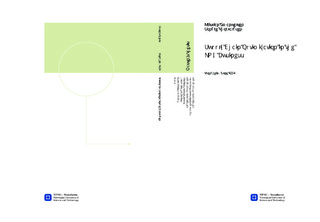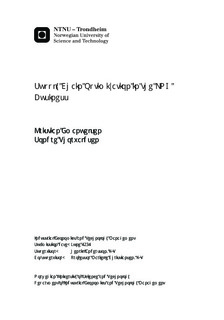| dc.description.abstract | Large players can control several tiers in the liquefied natural gas (LNG) supply chain, which calls for coordinated decisions and a system to facilitate integrated operations. This thesis is concerned with solving a combined inventory and routing problem (IRP) with contract handling within a tactical planning horizon. The purpose is to develop optimization models and methods which can support a company downstream in the LNG supply chain. Ships transport LNG from liquefaction plants, where the LNG is produced, to regasification terminals. Pick-up of gas must fulfill a set of purchase contracts, whereas inventory management prevails at the regasification terminals. The contracts state upper and lower limits for the volume of LNG that is picked up. Such limits apply for the total planning period and for defined subperiods. Additionally, contracts may define one or more primary ports, to where a given fraction of the LNG must be delivered. To get an even spread on the pick-ups, contracts introduce inter-arrival gaps that state a minimum number of days between pickups. Inventory management at the regasification terminals is about ensuring the storage level to be within specified limits. The timing of deliveries, sales and purchases is crucial to comply with inventory requirements. Planning periods of six to ten weeks are considered, and the objective is to obtain maximum profit from operations. Experience in the literature indicates that the LNG-IRP is very complex and computationally hard to solve. Our project work (Emanuelsen and Thorvaldsen, 2011) suggests that introduction of contracts complicates the problem even more. The mathematical model from the project is improved and we develop two additional models. The first model is an arc flow formulation that use designated variables to represent all decisions explicitly. We then progress with a path flow formulation, which uses one variable to represent a complete path. A path incorporates the schedule for a ship, combined with the quantities loaded and unloaded in each port. The last model is a duty flow formulation, where paths are replaced by duties. Duties are essentially partial paths that cover sailings only from a pick-up port to one or more delivery ports, and back to a pick-up port. The models are implemented as mixed-integer programs (MIP) by use of commercial optimization software. For the path and duty flow models, a tool is also developed to generate all columns a priori. In order to test the formulations, instances are created based on real-life data. The aim is to approach the problem with these three formulations, and investigate their performance relative to each other. Further, the influence of contractual terms on the profit is analyzed. Computational results show that the arc flow model is able to solve most of the instances to optimality. However, proving that the solutions are optimal can be time-consuming. For the path flow model, memory capacity proves to be an obstacle, since the number of paths becomes huge with long planning horizons. Therefore, only small instances are solved to optimality. The duty flow model, in contrast, solves nearly all instances within a relatively short amount of time. Duties are significantly less numerous than paths, and the formulation manage to connect the duties effectively. In order to explore the potential of the duty flow formulation further, a dynamic implementation is also developed. However, further research and development are necessary to conclude on its performance potential. | nb_NO |

